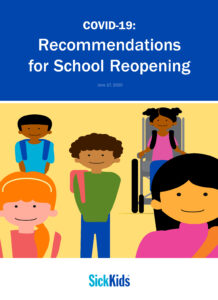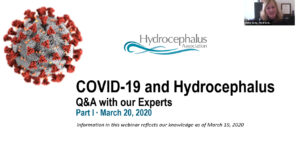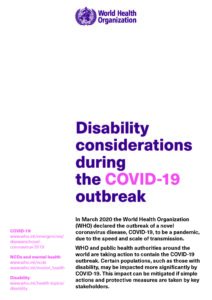Hydrocephalus is a neurological condition in which fluid accumulates in the brain due to a blockage. The ventricles swell and put pressure on the brain. This condition can cause serious damage to your brain and its ability to process information.
It is estimated that 120,000 Canadians are living with hydrocephalus. It is more common than Down’s Syndrome or brain tumours. 90% of people with spina bifida, also have hydrocephalus. It is the most common reason for brain surgery in children.
Hydrocephalus can be present at birth or be acquired later in life as a result of a tumor, head injury, meningitis or hemorrhage. Congenital hydrocephalus can occur in isolation or may be associated with other conditions such as spina bifida, dandy walker syndrome, aqueductal stenosis, arachnoid cysts and porencephaly.
Anyone can develop hydrocephalus at any time during their lifespan. The most common causes of hydrocephalus in children are brain bleeds as a result of prematurity, spina bifida, brain tumors, infection and head injury. Acquired hydrocephalus can also result due to a concussion or head injury, brain tumor or cyst, intracranial bleeding (stroke), meningitis and other unknowns. Those aged 55 and older are at risk of developing Normal Pressure Hydrocephalus as it is often associated with the aging process. It is frequently misdiagnosed as dementia or Parkinson’s or Alzheimer’s.
Hydrocephalus is a very serious condition that, in most cases, requires medical attention. In some instances, if left untreated, it can cause permanent brain damage and even death. For some, delaying treatment can cause lasting injury to the brain and cause a wide range of issues ranging from difficulty breathing, poor muscle coordination and mobility challenges to difficulties with vision, fatigue, headaches, seizures, incontinence and hormonal imbalances. Challenges with learning, social skills, memory and problem solving are also common.
It differs from person to person depending on what caused the hydrocephalus, how long the condition has been present, if there is any brain damage, and how extensive the damage is, if there are any other associated complications and what treatment was provided.
Hydrocephalus is a chronic neurological condition. That means there is no cure and, in most cases, the person affected will live with the condition for life. In some instances, if hydrocephalus develops due to a blockage like a brain tumour, sometimes removing the blockage or tumour will allow the cerebral spinal fluid flow to return to normal.
The most common treatment for hydrocephalus is the surgical placement of a shunt, a device that drains excess cerebral spinal fluid (CSF) from the brain to another part of the body. A shunt is a flexible piece of tubing that is attached to a valve that controls the flow of CSF.
Endoscopic Third Ventriculostomy (ETV) surgery is an alternative to shunting for some individuals. An ETV consists of making an opening in the floor of the ventricle at the base of the brain. The CSF is then no longer blocked and can flow around the brain. An ETV can also fail or become blocked. Not everyone with hydrocephalus is a candidate for ETV surgery.
In some cases, the shunt may totally cease to function without any adverse consequences. Most often shunts get blocked by tissue, blood cells or bacteria growths. Obstructions may occur in any of the shunt parts. The shunt may also be blocked if the parts become separated or if the position of the shunt changes. Overdrainage and underdrainage can also occur.
Shunts can stop working or malfunction at any time. Some individuals may need few, if any revisions. Others may have ongoing problems requiring many revisions. It cannot be predicted how many revisions a person may undergo.
Time spent in hospital can range from 1-2 days to a week or more depending on the individual. After discharge, a follow-up appointment is usually made for six weeks post-op. There may be staples or stitches that need to be taken out and your doctor or a nurse will discuss this before leaving the hospital. Upon returning home an individual should monitor their recovery and be aware of the signs of shunt malfunction and infection. Seek medical attention immediately, if you notice any of those signs or symptoms.


